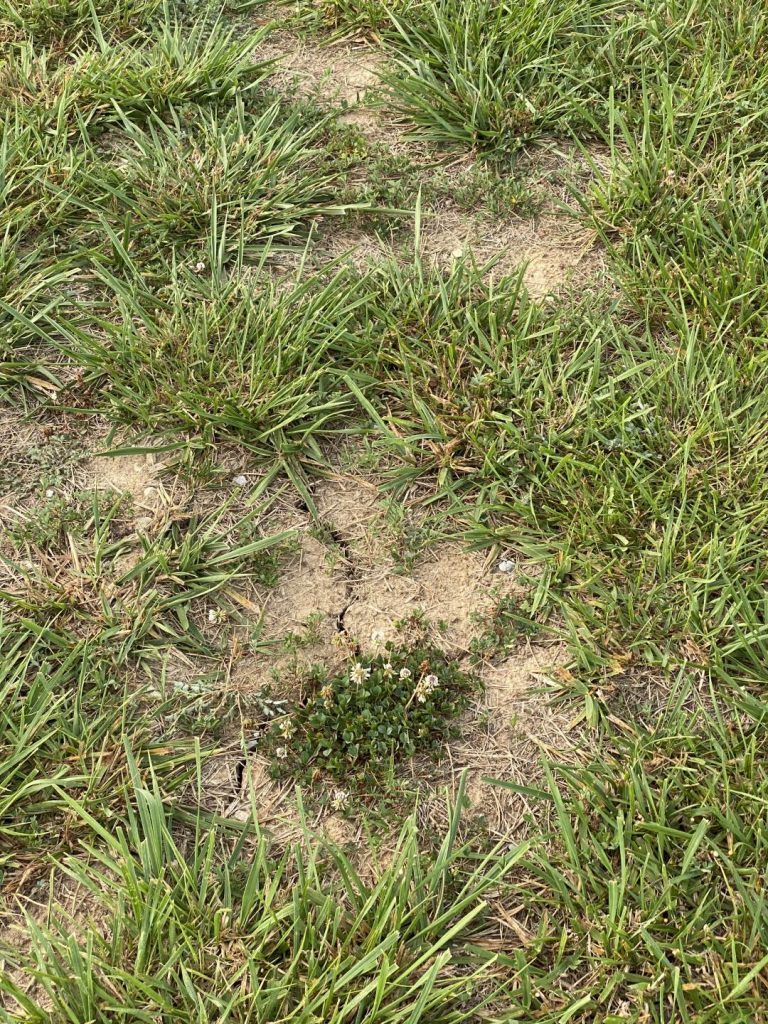Got a Cracked Lawn?
Summer in Mid-Missouri means temps will rise well into the 90’s throughout July and August and maybe even hotter.
If you read our 5 Ways to Survive the Summer post, you read about the importance of keeping your lawn and landscape hydrated as much as possible, including making sure it receives up to 1 to 1-1/2 inches of irrigation or rain every two weeks.
If your cool season lawn* doesn’t receive this type of hydration, it will begin to brown, develop bare spots, expand and crack. Weeds tend to come up in these areas as some of these areas are more tolerant of these conditions than your turf.
According to the University of Missouri Extension Home Lawn Watering Guide , there are many things you can do in addition to watering to help prevent a dry, cracked lawn:
- Mow your grass so it’s at least 3-1/2″ tall after you mow. Taller grass has deeper roots and a lower tendency to wilt and provides shade to the soil surface and reduces temperatures near the base of the grass by providing shade to the soil.
- Use grass that require less water to keep hydrated, such as tall fescue and zoysia grasses. Bermuda grass requires less water to manage as well.
Most experts recommend you water your lawn before 10 a.m. Duration depends on the dryness of the soil and current conditions.
Will the Atkins Lawn Applications still “work” if my soil is dry?
Applications vary, but in general this time of year we are spreading some organics (specialty application customers), treating disease (fungicides) and managing weeds. Summer weeds are better adapted to these conditions and are still growing so they will take up the herbicide we apply as-needed (the guys are spot-spraying weeds now) and should still get control. We do have to watch the afternoon temps though.
If you don’t have time to water your lawn, consider installing an irrigation system. This photo below shows the difference in irrigated grass (right side) vs. non-irrigated grass (left side). See the difference?

To ensure your lawn is in pristine condition, albeit the extreme temperatures, call us at (573) 874-5100 to schedule service with a member our team! We will take a look at your lawn for free and offer recommendations on what you can do to keep your lawn looking healthy all summer long.
* What is a cool season lawn?
“Cool season lawns” are typically comprised of Tall Fescue, Kentucky Bluegrass and/or Perennial Rye. They all grow best in cooler climates (Spring and Fall here in Missouri). They often go dormant over the Summer months (turn brown temporarily and then green back up in the early Fall as temps drop and rain comes back).
The post Got a Cracked Lawn? appeared first on Atkins Inc.







